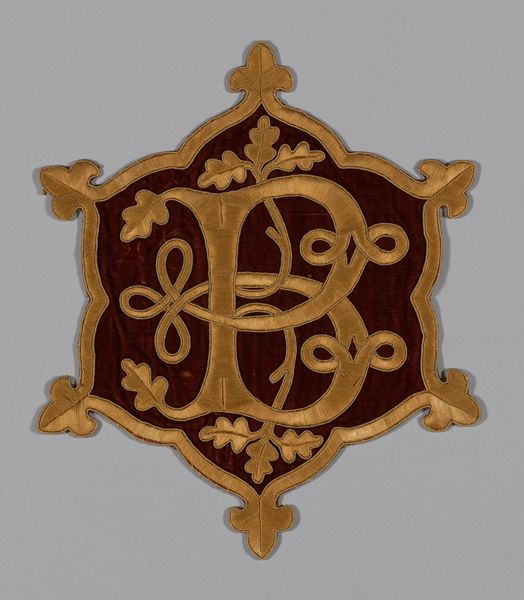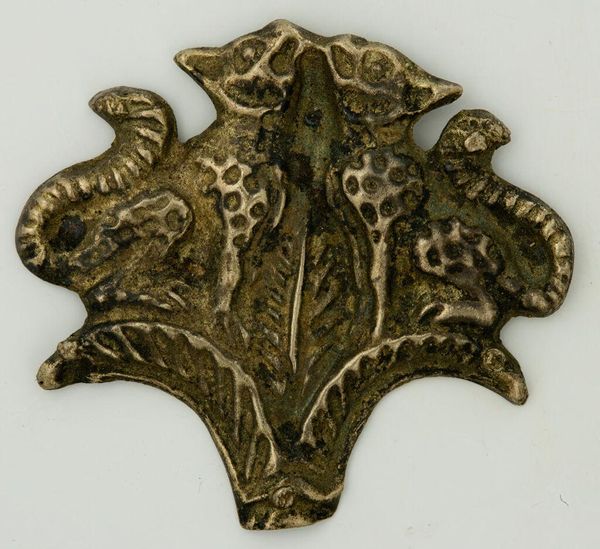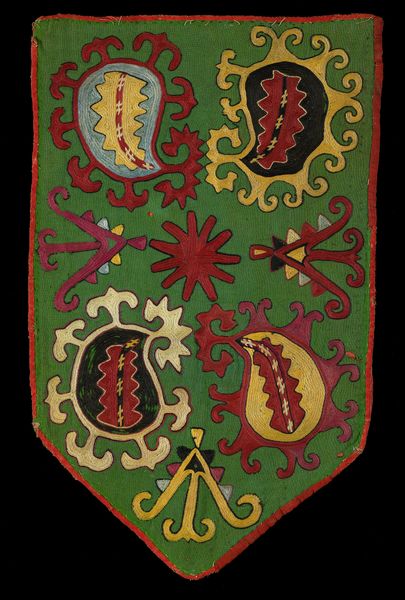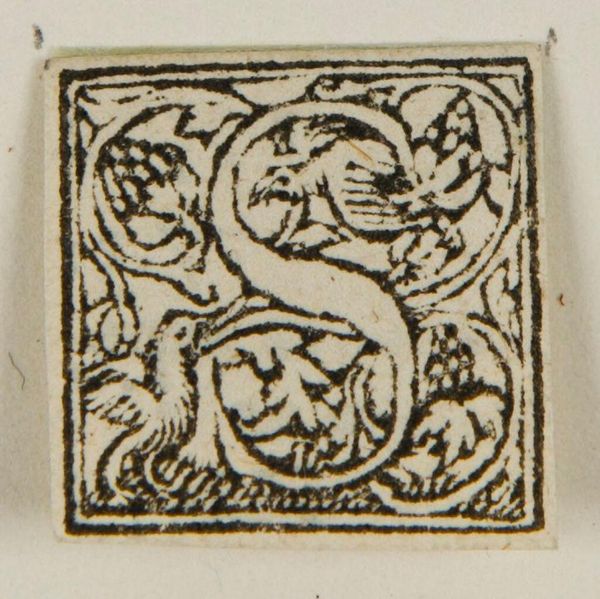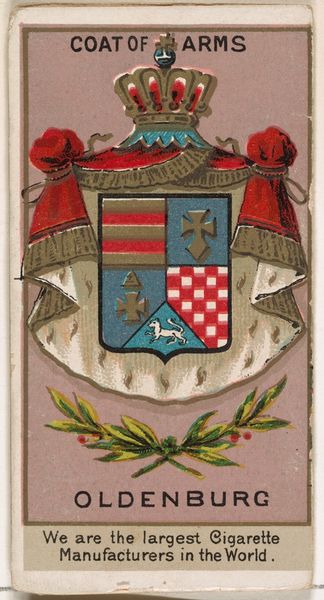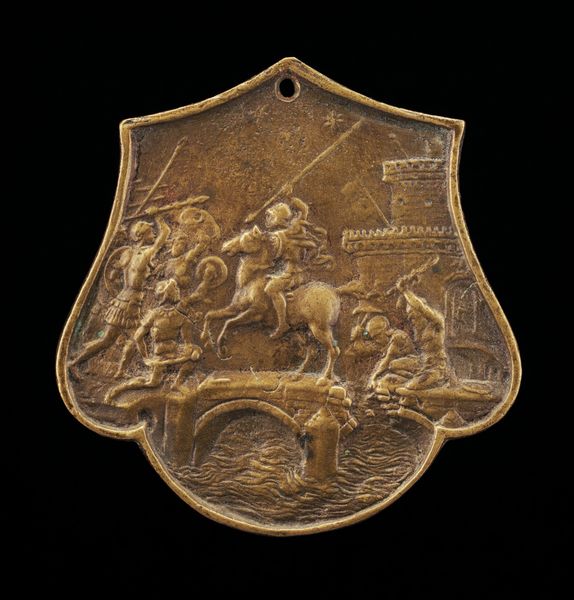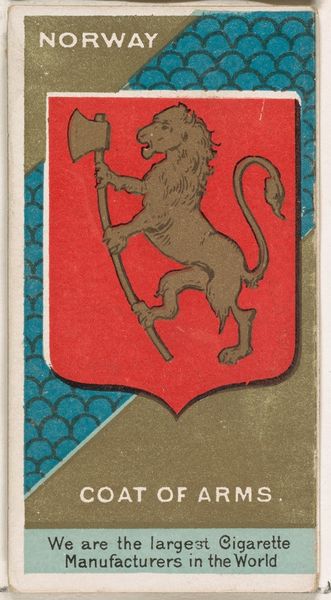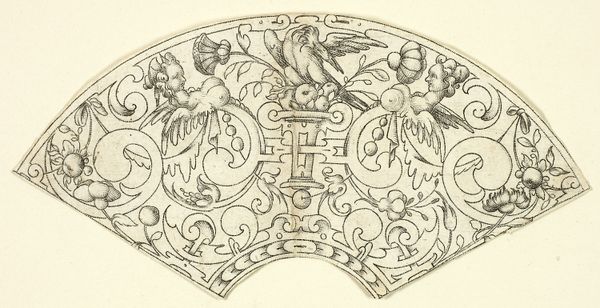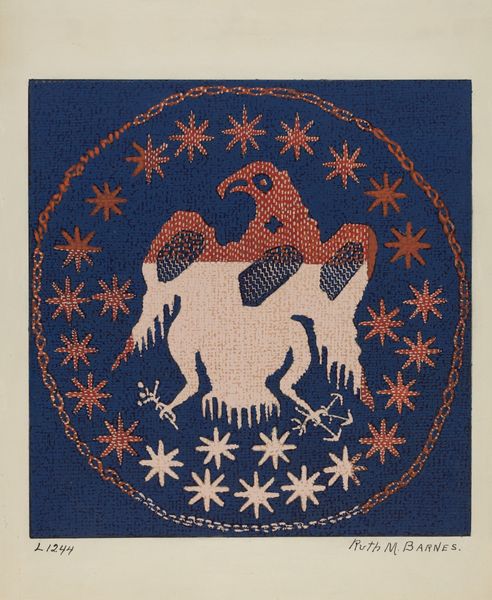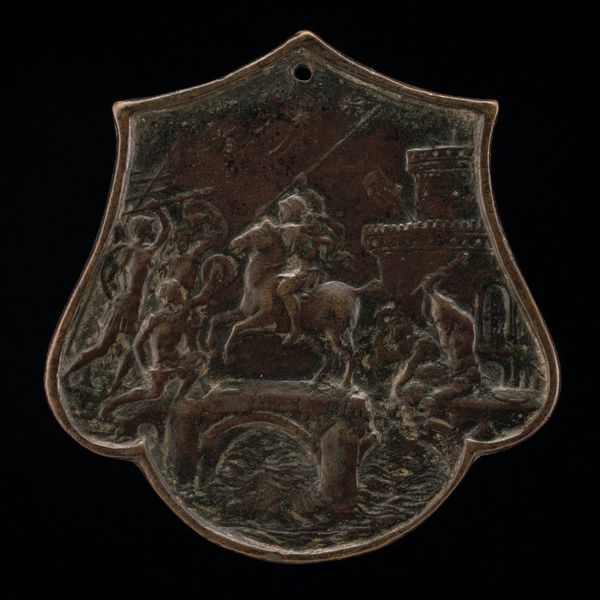
Myddelton Biddulph Armorial Medallion c. 1846
0:00
0:00
weaving, textile
#
medieval
#
weaving
#
textile
#
text
#
line
#
pattern repetition
Dimensions: 42.2 × 36 cm (16 5/8 × 14 1/8 in.)
Copyright: Public Domain
Curator: Here we have the Myddelton Biddulph Armorial Medallion, dating from around 1846, a weaving work now residing here at The Art Institute of Chicago, created by Augustus Welby Northmore Pugin. Editor: Wow, it’s got that old-world heraldry vibe but with a playful, almost cartoonish energy. I love the color contrasts—makes the wolf pop against the muted green. It's like something out of a medieval video game. Curator: The medieval inspiration is quite intentional, actually. Pugin was a major figure in the Gothic Revival, believing that medieval art and architecture embodied the truest expressions of Christian society. So he was involved in a broad political as well as aesthetic project. Editor: Right, so this isn’t just some quaint textile. This object is carrying all these… expectations. The seriousness of lineage and social roles sort of comes with it. But then that wolf! Curator: Yes, heraldry was quite popular in Victorian England. This medallion represents the Biddulph family’s coat of arms, meant to project authority, lineage, and a certain cultural position through visual symbols. The choice of textile elevates what would simply have been symbolic language. Editor: A defiant wolf seems like an odd choice to project power, doesn't it? Almost punk, like saying, "We play by our own rules!" I wonder if it's meant to hint at hidden narratives, an untamed wildness beneath that respectable veneer. Curator: Or perhaps, the wolf, as a creature of cunning and resilience, reflects a strategic shrewdness? One thing this emblem definitely points to is that the revival of medieval art wasn't only about aesthetics but also the political ideals tied to an imagined, more morally upright past. Editor: You're probably right, but the idea of these formal heraldic things as a place to hint at other layers intrigues me the most. It makes you look beyond the official story. This medallion could be someone’s quiet act of resistance, embroidered with intent, like a secret family joke. Curator: It's a very compelling thought—thank you for it! I appreciate how you were able to draw a through-line of this piece to possible deeper or personal symbolic implications of visual language and social meaning within. Editor: Anytime! Thanks for illuminating what exactly this weaving is, and what a riot it’s kicking off! I think looking for ways this wolf pushes on Victorian pretension and order in a tiny, powerful way.
Comments
No comments
Be the first to comment and join the conversation on the ultimate creative platform.
